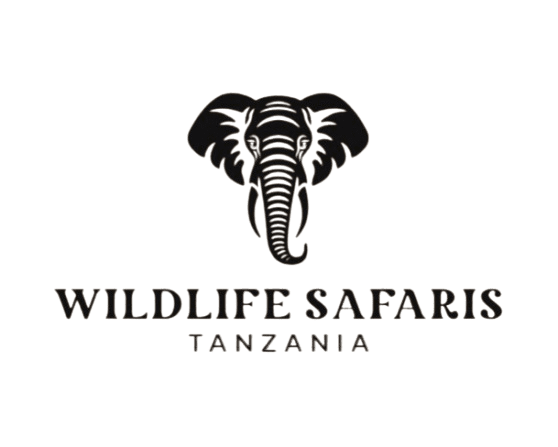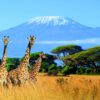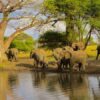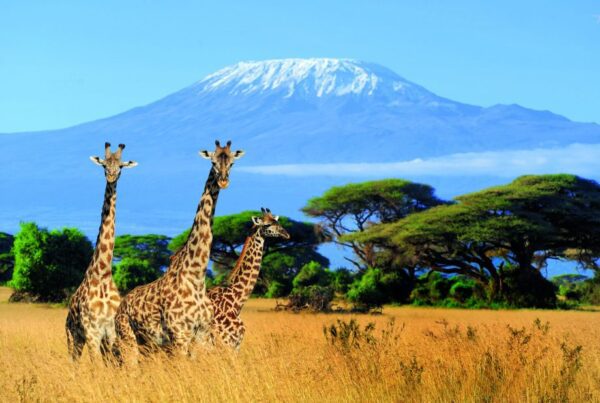What Makes Mikumi National Park Special?
Mikumi National Park is often referred to as the “Little Serengeti” by visitors with good cause. Yes, it is our Little Serengeti close to Dar es Salaam because of the park’s different ecosystems, which are quite similar to those of the Serengeti. Mikumi, which was founded in 1964, is a unique day trip destination from Tanzania’s economic hub because of its abundance of animals, birds, and natural beauty.
With a total area of 3,230 square kilometers (1,250 square miles), the park is naturally the fifth biggest in the nation, behind Katavi, Ruaha, Nyerere, and the Serengeti. We’ll discuss four distinctive features of Mikumi National Park in this blog. Before organizing your expedition to this undiscovered treasure, we’ll also go over the greatest information you could possibly need.
1. Supporting a variety of environments.
Mikumi is home to a variety of ecosystems that foster an environment that is favorable for animals. Evergreen trees are scattered across the mild foothills that make up the southern portion. Additionally, there are miombo forests scattered among expansive savannahs.
A road crosses the park, which is an open savannah that stretches to the foothills of the Lumango mountain range, Uluguru, and Rubeho. The far north is made up of rock formations, acacia-dotted savannas, palm trees, tamarind forests, and baobabs. There are more animals in this area than in the south because of the sort of flora that sustains them.
2. A large number of animals.
Numerous creatures of all sizes may be seen in Mikumi, living in a variety of habitats across the park. At least the four Big Five—elephant, buffalo, leopard, and lion—are found here, even if you won’t find all five. There are no rhinos. You may visit Nyerere National Park, which is adjacent to Mikumi, to observe these ancient creatures.
In the Miombo forests, elephants travel in large herds, pulling down trees to feed their young. The Mkata floodplains, one of the nation’s vast, extended savannahs, are ruled by lions in great prides.
Grass-eaters such as giraffes, wildebeests, zebras, and other antelope species live with lions. Even uncommon creatures like the African wild dog, blue wildebeest, Lichtenstein’s hartebeest, and sable antelope can be found. Large groups of hippos and crocodiles live side by side with water fowl in the streams and their two man-made pools. Leopards, buffalo, spotted hyenas, and tiny mammals like mice and mongooses are among the other creatures on display.
3. Amazing avian life.
Birders should not miss Mikumi, a picturesque park. This beautiful park is home to over 400 different types of birds. Rare species such as the broad-tailed paradise-whydah, the Kurrichane thrush, the Miombo rock-thrush, the Shelley’s sunbird, the Arnot’s chat, the Tabora cisticola, the Racquet-tailed roller, the Pale-billed hornbill, and Dickinson’s kestrel may be spotted.
4. Dar es Salaam is close to Mikumi.
It takes four to five hours to drive from Dar es Salaam to Mikumi, which is around 3000 kilometers (186 miles). It’s perfect for quick getaways because of its close proximity to the business hub. Are you fed up with the city’s bustle? To rejuvenate your mind with breathtaking views of animals, landscapes, and birds, decide to spend your weekend in Mikumi.
Activities at Mikumi National Park
There are several activities available here. Our favorite things to do are as follows:
Play a game.
The greatest way to experience Mikumi’s animals and breathtaking scenery is on a conventional game drive. Simply get into a safari vehicle and head into the expansive floodplains of Mkata. Numerous plains animals, including buffalo, antelope, lions, zebras, and wildebeest, will be seen. Giraffe heads appear as you pass the trees, and it’s likely that you’ll come upon a sizable herd of elephants. You could be lucky enough to see a leopard on the prowl as the sun begins to set.
observing birds.
For ornithologists and birdwatchers, Mikumi is a must-see location. And with good reason—rare bird species like the red-throated wryneck, yellow-collared lovebird, Uluguru violet-backed sunbird, and Kilombero weaver may be found here. Numerous unique and endangered species can be found in the southern mountain range.
Safaris on foot.
Take a fulfilling stroll over the wooded slopes of the Uluguru and Rubeho Mountains to reestablish your connection with nature. Explore new flora and little animals like butterflies, which are common in the Mikumi mountain range. You may also forget about the daily grind by taking a contemplative guided stroll in the forest.
This is the ideal time of year to visit Mikumi National Park.
During the dry season, which runs from June to October, Mikumi provides wildlife excursions that are really remarkable. Because of the short grass, it is possible to observe wild creatures from a distance. Furthermore, there are still some water sources that attract animals for even easier wildlife viewing. It occasionally gets congested, although not as much as other northern parks, because so many visitors always come there for quick visits.
How Mikumi National Park may be reached
As we previously stated, Dar es Salaam is the ideal entrance point to Mikumi. You drive to Mikumi after landing at Julius Kambarage International Airport. The majority of visitors mix Nyerere, Ruaha, and Mikumi. Consequently, they take a plane from Dar es Salaam to one of these two parks, proceed with their plans, end with a drive-in safari to Mikumi, and then return to Dar es Salaam to go.
Make your strategy now!
Regardless of whether it is your first or second time there, the “little Serengeti” is a fantastic place for every safari traveler. You can get planning help from our safari planners. For a free quotation, please get in touch with them.








